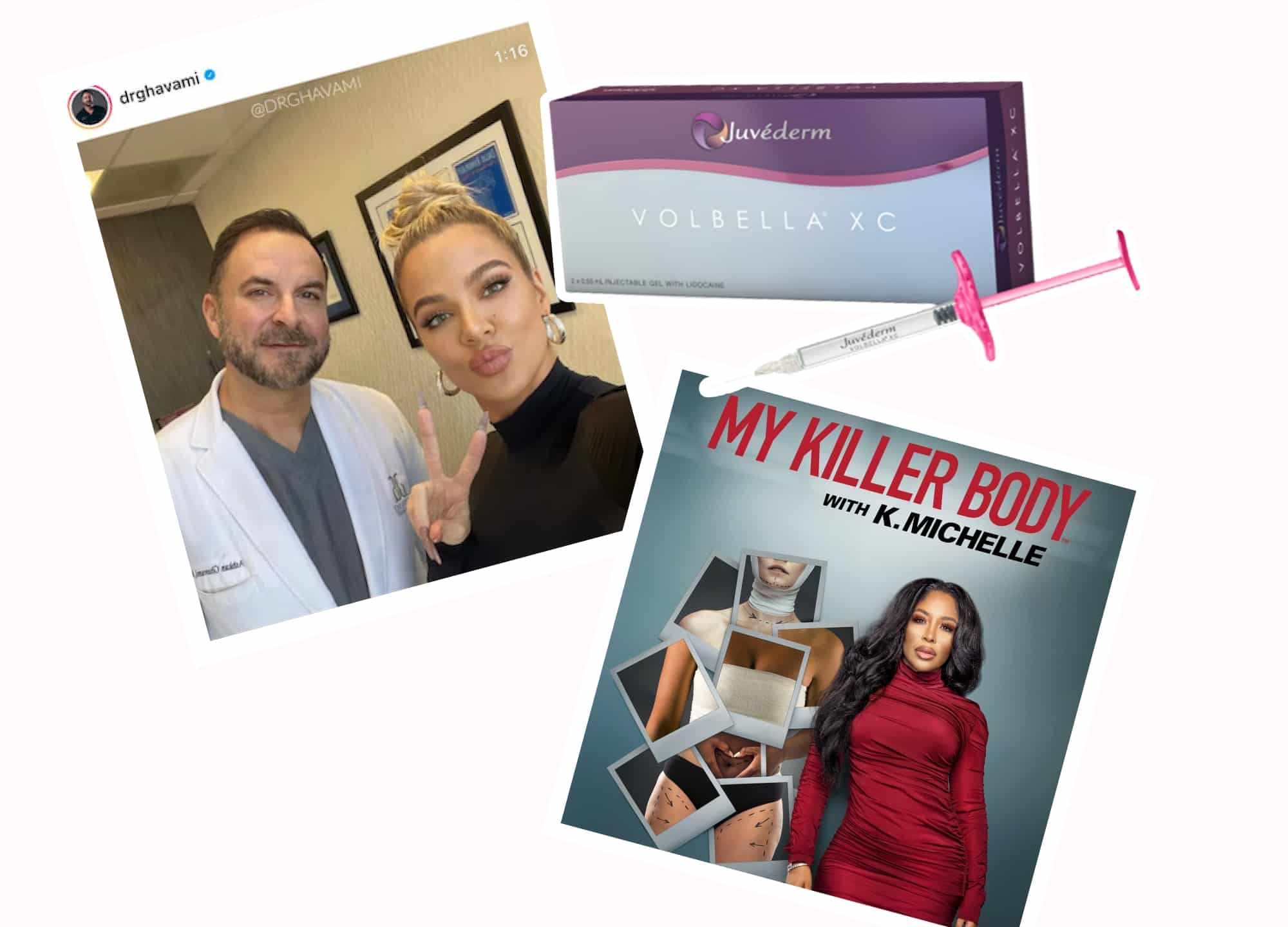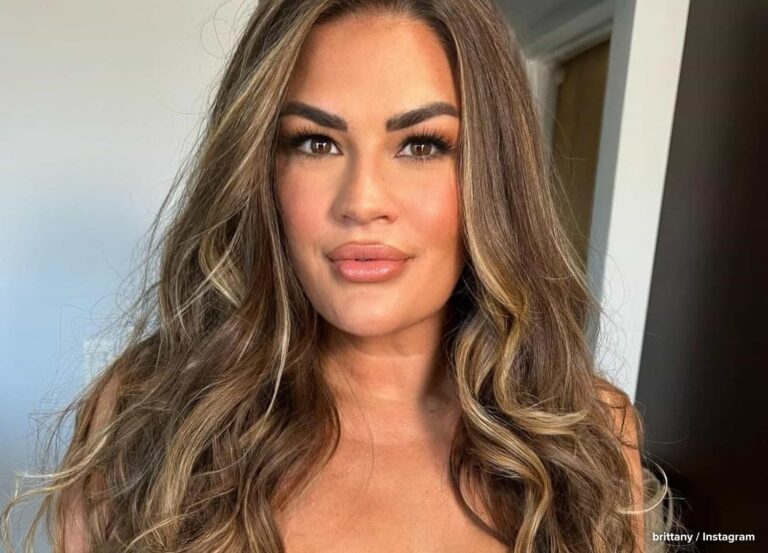Every month, we strive to bring you a balanced mix of breaking news (stars getting surgery, for instance, or compelling aesthetics trends) and advice you can always use, like how to tackle spider veins or conquer your fear of doctors. Invariably though, there’s an intriguing headline or viral post that doesn’t make its own stand-alone story yet is still worthy of a share.
Which brings us here, to the second installment of This Month in Aesthetics, an ICYMI recap of industry-molding moments that we’d be remiss not to acknowledge—from a new Lifetime series that’s shining a spotlight on cosmetic surgery complications to the mystery treatments that Khloé Kardashian tried on a recent visit with her plastic surgeon.
Khloé Kardashian gets “secret” skin tightening body procedures
When Khloé Kardashian recently saw board-certified Beverly Hills, California, plastic surgeon Dr. Ashkan Ghavami for some no-downtime tweaks, the doctor shared a snippet of her appointment on his Instagram grid (which Khloé later reposted to her stories).
Dr. Ghavami begins the clip by describing 2022 as “a renaissance period, where we have so many nonsurgical devices that actually work and do what they’re supposed to.” He then adds, “In a sense, [they] make you kind of like the filter you might want to use on certain days.” He goes on to say, “We’re going to have [Khloé] stand soon for skin tightening of the body.”
While the world is waiting to hear precisely which procedures the mega-influencer is about to have done, the conversation abruptly turns to…leggings. “They’re almost like a second skin,” points out Dr. Ghavami. To which Khloé replies, “They suck you in, they hold you tight, and they still show off your silhouette. We want to be high and tight with our leggings on.”
When they eventually circle back to treatments, Dr. Ghavami informs us that he’s not going to tell us “the exact secret things [they’re] going to do—but they’re all going to be nonsurgical, in the office, essentially painless.” The video wraps with Khloé professing, “I love a good nonsurgical procedure.”
Fans were clearly irked by the ambiguity. One commented, “We’re doing some nonsurgical work today, but it’s a secret. Okay.” Another chimed in: “Right! I was ready to slam my money down on the table🥴.” And a third: “This was a stupid video they posted. Sorry you’re not sitting at this table. You’re not rich enough.🙄”
If it’s specifics you’re seeking, perhaps check in on Kim. This report from US Weekly offers a detailed synopsis of her high-tech facial with celebrity aesthetician Toska Husted as well as the 18-step regimen she left with, which included Biologique Recherche P50 and Augustinus Bader Cleansing Balm, among other cult favorites.
2021 plastic surgery stats reveal winning (and losing) procedures
While the 2021 member survey from the American Academy of Facial Plastic and Reconstructive Surgery (AAFPRS) wasn’t entirely groundbreaking—demand for surgical and nonsurgical procedures is way up, people want to look better on screens, pandemic WFH allows for greater recovery time—a few trends did pique our interest.
- The three most popular surgical procedures performed by AAFPRS members in 2021 were rhinoplasty, facelifts, and blepharoplasty.
- Surgeons also reported a whopping 70% uptick in revision surgery.
- While neurotoxins and fillers once again stole the top two spots on the nonsurgical chart, fat-dissolving injections were the least performed procedure in this category last year.
- Lip lifts and revision injections, which the AAFPRS started tracking in 2021, appear to be on the rise.
Juvéderm Volbella XC approved for under-eyes
Earlier this month, Allergan announced the FDA approval of the hyaluronic acid (HA) filler Juvéderm Volbella XC for under-eye hollows. (It was previously indicated only for the lips.) “According to clinical trial data, 90% of subjects reported satisfaction through one year after treatment,” reads a press release from the company.
While injectors commonly use various HA gels off label in the tear troughs to camouflage dark circles, Volbella is the first to be officially cleared for the purpose. The under-eye area is notoriously challenging to treat with filler, it’s worth noting, and side effects, like persistent lumps and swelling, are not uncommon. Allergan has already begun training providers on the new indication, so make sure your injector is qualified to perform this procedure and can explain all the potential side effects and risks.
My Killer Body explores plastic surgery regret and revisions
Lifetime aired a new series this month called My Killer Body, which explores personal tales of plastic surgery gone wrong. The show is hosted by R&B artist K. Michelle, who was one of the first celebrities to speak out about the dangers of cosmetic surgery, after suffering the side effects of black-market silicone butt injections.
Each episode chronicles two patients whose lives have been upended by botched plastic surgery—procedures that left them with near-fatal infections, disfiguring scars, and debilitating pain. Board-certified plastic surgeons, like Miami-based Dr. Adam J. Rubinstein, serve as fixers on their restorative journeys, revising previous mistakes and guiding patients back to health.
“There are certainly cases where, even in the best hands, complications can arise,” Dr. Rubinstein tells us. But then there are more “egregious cases,” he notes, like those featured on the show, where patients have been operated on, sometimes multiple times, by unqualified providers who may not even be legitimate plastic surgeons. “The stuff that goes on in our field doesn’t happen in any other branch of medicine,” he adds. “You’d never go to a colorectal surgeon for cardiac surgery. But that sort of thing has become commonplace in plastic surgery.”
Injectors are buzzing about the relaunch of Sculptra
The injectable collagen-stimulator Sculptra (poly-L-lactic acid) has earned several new FDA approvals, prompting an official relaunch of the drug. The label updates pertain mainly to how providers reconstitute, or prepare, the product for injection—and are designed to make the process more convenient and comfortable for patients.
While Sculptra is perhaps best known for restoring lost volume in a gradual fashion—it was originally approved for treating facial wasting in HIV patients—ongoing clinical trials are demonstrating the drug’s less-publicized power to decrease fine lines and wrinkles while improving the overall quality of the skin, for up to two years or more.
Dr. Michael Somenek, a Sculptra investigator and board-certified facial plastic surgeon in Washington, D.C., recently spoke about the drug’s benefits on The Blade & Beyond, the podcast he cohosts with his partner, board-certified plastic surgeon Dr. Troy Pittman. “There’s something called the Sculptra glow,” Dr. Somenek says. “A lot of Sculptra injectors, we notice in the imaging we do consistently with patients that their skin quality looks better [after treatment]. And in further studies we’re doing, that’s being assessed—radiance and things of that nature.”
Dr. Somenek expects that the relaunch will introduce the injectable to a more diverse swath of aesthetics enthusiasts, including those in their 20s and 30s who are aiming to stall volume loss while their collagen cells are still young and reactive.











